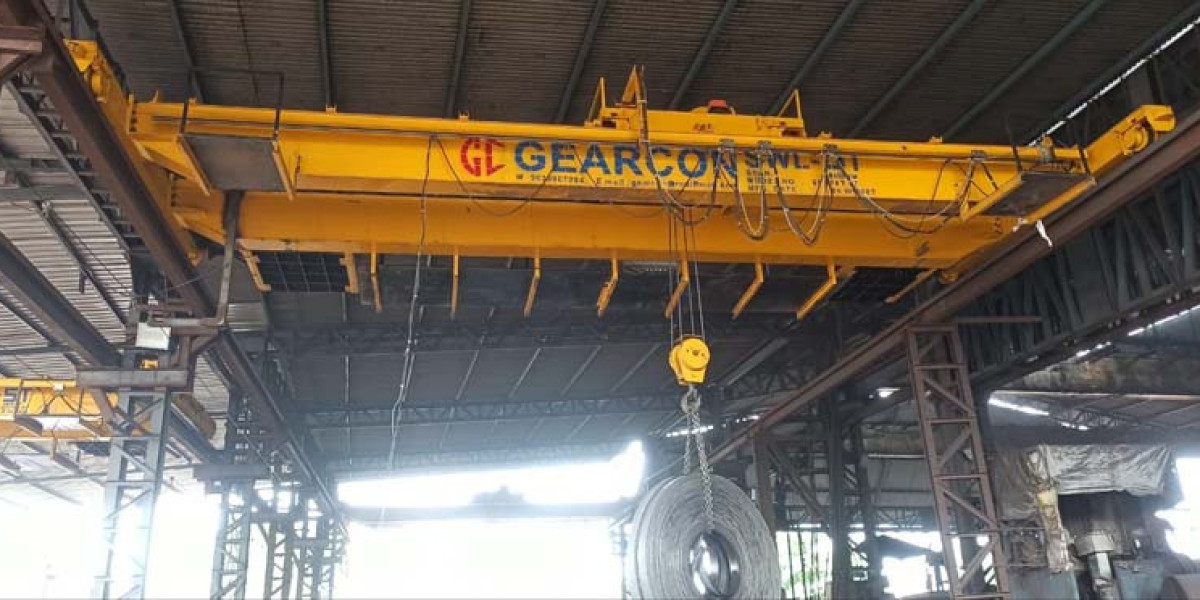The journey of EOT (Electric Overhead Traveling) cranes has been marked by significant advancements and innovations that have transformed the landscape of industrial lifting and material handling. As one of the leading Over Head EOT Crane Manufacturers in India, we have witnessed and contributed to the evolution of these essential industrial machines.
1. The Origins of EOT Cranes
The concept of cranes dates back to ancient civilizations where rudimentary lifting devices were used to construct monumental structures. The earliest cranes were simple, manually operated machines made from wood and rope. These cranes relied heavily on human or animal power to lift and move heavy loads.
1.1 Ancient Crane Mechanisms
In ancient Greece and Rome, cranes became more sophisticated with the introduction of pulleys and levers, which allowed for greater lifting capacities and ease of operation. These early cranes laid the groundwork for future developments in crane technology.
1.2 The Industrial Revolution: A Turning Point
The Industrial Revolution in the 18th and 19th centuries marked a significant turning point in the evolution of cranes. The advent of steam power revolutionized crane design, leading to the creation of more powerful and efficient lifting machines. Steam-powered cranes were widely used in shipyards, railways, and construction sites, dramatically improving productivity and enabling the handling of heavier loads.
2. The Birth of Electric Cranes
The late 19th and early 20th centuries saw the introduction of electric power, which brought about a new era in crane technology. Electric motors replaced steam engines, leading to the development of electric overhead traveling (EOT) cranes. These cranes offered greater precision, control, and efficiency compared to their steam-powered predecessors.
2.1 Early Electric EOT Cranes
The first electric EOT cranes were relatively simple in design, featuring basic electric motors and controls. Despite their simplicity, these cranes marked a significant improvement in lifting capabilities and operational efficiency. They quickly gained popularity in various industries, including manufacturing, warehousing, and logistics.
2.2 Advancements in Electric Motors and Controls
As electric motor technology advanced, so did the capabilities of EOT cranes. The introduction of alternating current (AC) motors allowed for smoother and more reliable operation. Additionally, the development of sophisticated control systems enabled precise movement and positioning of loads, further enhancing the versatility and efficiency of EOT cranes.
3. The Rise of Modern EOT Cranes
The latter half of the 20th century witnessed rapid advancements in EOT crane technology, driven by innovations in materials, electronics, and automation. Modern EOT cranes are characterized by their high performance, safety features, and adaptability to various industrial applications.
3.1 Innovations in Crane Design and Materials
Modern EOT cranes are constructed using advanced materials such as high-strength steel and lightweight alloys, which enhance their load-bearing capacity and durability. The use of computer-aided design (CAD) and finite element analysis (FEA) has enabled manufacturers to optimize crane structures for maximum efficiency and safety.
3.2 Integration of Automation and Smart Technology
One of the most significant advancements in modern EOT cranes is the integration of automation and smart technology. Automated EOT cranes can perform complex lifting and material handling tasks with minimal human intervention. Features such as programmable logic controllers (PLCs), remote monitoring, and diagnostic systems have made EOT cranes more efficient and reliable.
3.3 Safety Enhancements
Safety has always been a paramount concern in crane operations. Modern EOT cranes are equipped with a range of safety features, including overload protection, anti-collision systems, emergency stop buttons, and advanced braking systems. These features ensure the safe and reliable operation of EOT cranes in various industrial environments.
4. The Role of EOT Cranes in Modern Industries
EOT cranes have become indispensable in a wide range of industries, thanks to their versatility, efficiency, and reliability. From manufacturing and construction to logistics and warehousing, EOT cranes play a crucial role in improving productivity and ensuring the smooth flow of materials.
4.1 Manufacturing and Assembly
In manufacturing plants, EOT cranes are used to lift and move heavy machinery, raw materials, and finished products. They facilitate the assembly process by enabling the precise positioning of components, reducing manual labor, and minimizing the risk of workplace injuries.
4.2 Construction and Infrastructure
EOT cranes are essential in the construction industry for lifting and placing building materials, steel structures, and concrete components. Their ability to handle heavy loads with precision makes them ideal for constructing large-scale infrastructure projects such as bridges, dams, and skyscrapers.
4.3 Warehousing and Logistics
In warehousing and logistics, EOT cranes are used for loading and unloading goods, organizing storage spaces, and handling bulky items. Automated EOT cranes streamline warehouse operations by efficiently managing inventory and reducing turnaround times.
5. The Future of EOT Cranes
The future of EOT cranes is poised for further advancements, driven by emerging technologies and changing industrial needs. As one of the prominent Over Head EOT Crane Manufacturers in Gujarat, we are committed to staying at the forefront of these developments.
5.1 Green and Sustainable Cranes
Environmental sustainability is becoming increasingly important in industrial operations. Future EOT cranes will incorporate eco-friendly technologies such as energy-efficient motors, regenerative braking systems, and the use of sustainable materials. These innovations will reduce the environmental impact of crane operations and contribute to a greener future.
5.2 Advanced Automation and Robotics
The integration of advanced automation and robotics will continue to transform EOT crane operations. Autonomous cranes capable of performing complex tasks without human intervention will become more prevalent. These cranes will leverage artificial intelligence (AI) and machine learning to optimize performance, improve safety, and enhance operational efficiency.
5.3 Enhanced Connectivity and IoT Integration
The Internet of Things (IoT) will play a significant role in the future of EOT cranes. IoT-enabled cranes will be equipped with sensors and connectivity features that allow for real-time monitoring, predictive maintenance, and remote diagnostics. This level of connectivity will enhance the reliability and uptime of EOT cranes, minimizing downtime and operational disruptions.
6. Conclusion
The evolution of EOT cranes from their humble beginnings to the advanced machines we see today is a testament to the relentless pursuit of innovation and excellence in the field of material handling. As one of the leading Over Head EOT Crane Manufacturers in India, we take pride in contributing to this journey and providing cutting-edge solutions that meet the diverse needs of our clients.
The future of EOT cranes holds exciting possibilities, with advancements in automation, sustainability, and connectivity set to redefine the industry. By embracing these innovations, we are committed to delivering EOT cranes that not only enhance operational efficiency but also promote a safer and more sustainable industrial landscape.



